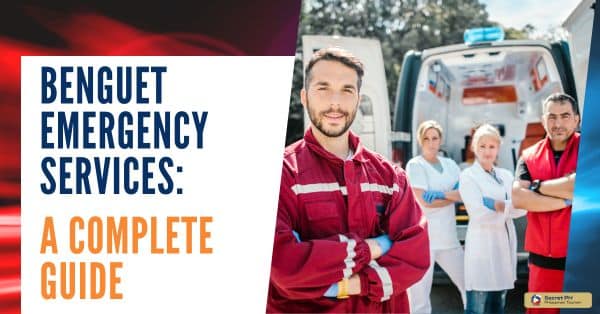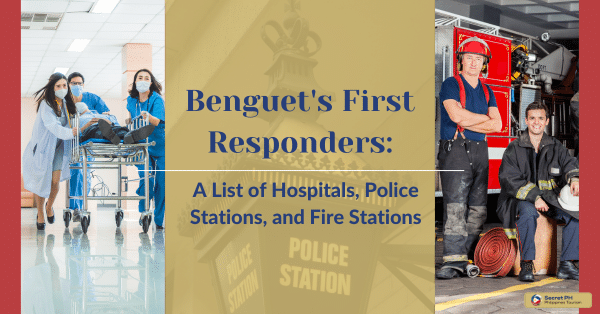Emergencies can strike unexpectedly in the Philippines. To maintain a safe environment during such situations, it is essential to have an emergency plan, educate yourself and others, keep emergency supplies handy, stay informed, know your evacuation routes, practice communication with family and neighbors, and secure your property.
In this blog, we will discuss eight essential tips for maintaining a safe environment during emergencies in the Philippines. By following these tips, one can minimize the risks and stay safe during emergencies.
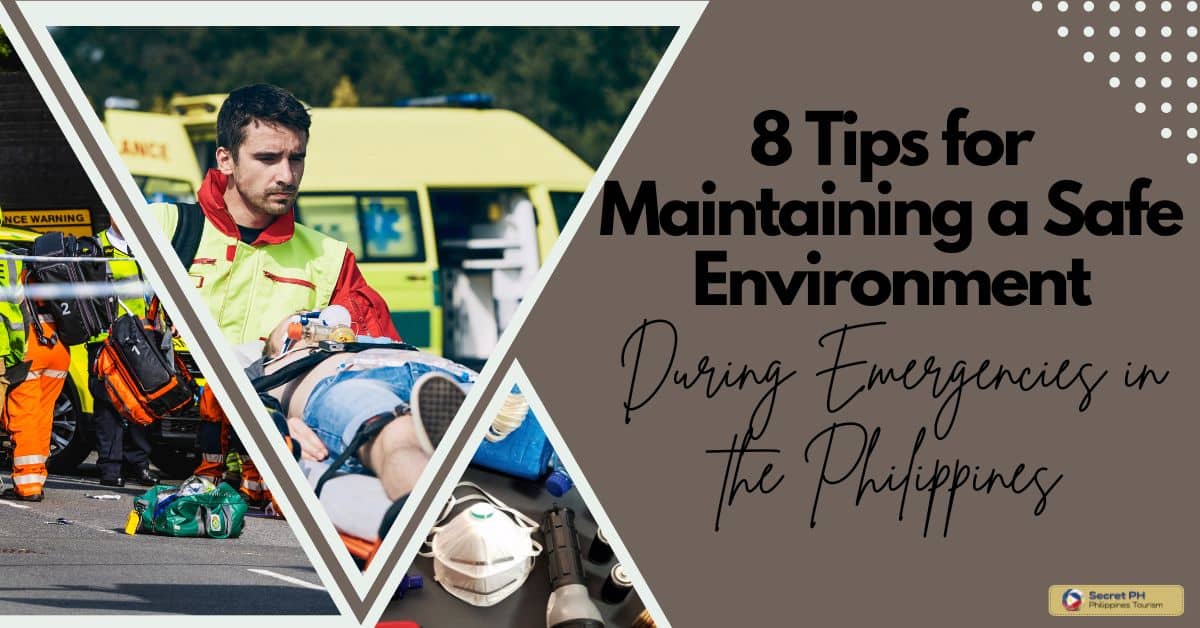
Emergencies in the Philippines
Despite the Philippines facing a variety of natural disasters and calamities, planning for these events are essential in maintaining a safe environment. Having response teams ready and educated on disaster protocol, following warning signs, having contingency plans for homes and businesses alike, and being aware of one’s surroundings are all important steps to keep a safety net for citizens during an emergency.
Importance must be placed on prevention as well; knowledge on how proper construction affects the likelihood of surviving earthquakes or cyclones can help decrease damage from occurring in the future. Aware citizens make up a stronger community, which is able to work together to maintain safety during emergencies.

Tip 1: Have an Emergency Plan in Place
Having an emergency plan in place is essential to prepare for the unexpected. Unexpected weather events, fires, and health emergencies can arise at any moment’s notice, making it highly important for households and businesses alike to be prepared.
By having an emergency plan in place, outlining what specific steps will be taken during each emergency type, everyone involved benefits from increased security measures. It’s also important to ensure that emergency plans are regularly reviewed and updated.

How to create an effective emergency plan
Forming an effective emergency plan is a crucial factor to ensuring safety in any unpredictable or unlikely event. With a comprehensive emergency plan in place, planning ahead can improve safety and reduce stress should an emergency arise.

- Identify the types of emergencies you may face in your area: The Philippines is prone to natural disasters such as typhoons, earthquakes, and floods. Knowing what types of emergencies you may face will help you tailor your plan to your specific needs.
- Develop a communication plan: It’s important to establish a way to communicate with your family and loved ones during an emergency. Make sure everyone knows the plan and has access to important phone numbers and contact information.
- Prepare an emergency kit: Assemble an emergency kit that contains important items such as food, water, first aid supplies, and other necessities. Consider including items that are specific to your area, such as a whistle in case of flooding.
- Plan for evacuation: If evacuation is necessary, make sure you have a plan in place. Know the best routes to take and have a designated meeting place for your family. Consider having a “go bag” prepared with essential items in case you need to leave quickly.
- Stay informed: Keep up-to-date with the latest information about potential emergencies in your area. Pay attention to news and weather reports, and consider signing up for emergency alerts from local authorities. Being informed can help you make informed decisions and take appropriate actions during an emergency.
Tip 2: Educate Yourself and Others
Educating oneself and others on emergency preparedness is a crucial step in being prepared for a disaster. Understanding the potential hazards of the area, taking into account local capabilities, and knowing how to respond to certain situations are all aspects that should be addressed when creating an emergency plan.
Having this knowledge beforehand will help ensure safety during an emergency while helping individuals remain calm during the crisis. It is essential that everyone be prepared by having resources such as stockpiles of water, food, clothing, and other necessary supplies available so that residents are not caught without them in a time of need.

Resources for education and training
In times of crisis and emergency, resources for education and training become even more important in order to help those affected find stability and a sense of normality at life. Here in the Philippines, there are plenty of options available when it comes to finding quality education and training during emergencies such as natural disasters or political upheavals.
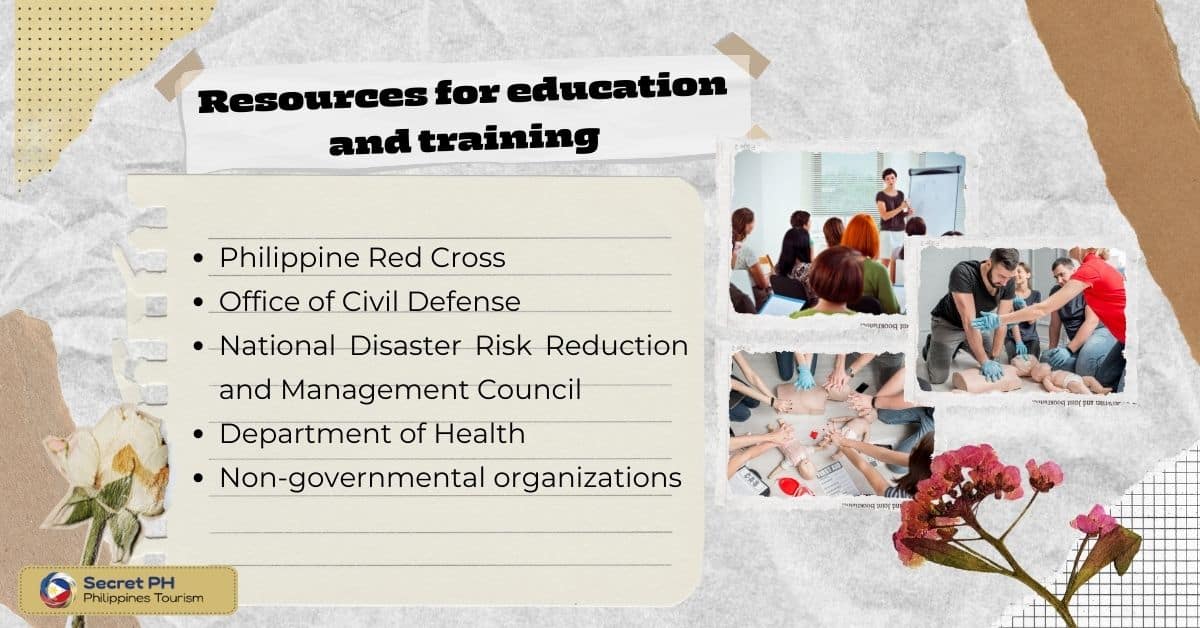
- Philippine Red Cross: The Philippine Red Cross offers a variety of training programs and resources related to disaster preparedness and emergency response. They offer courses on basic life support, first aid, and disaster management.
- Office of Civil Defense: The Office of Civil Defense is the primary government agency responsible for disaster management in the Philippines. They provide training and education programs for individuals, communities, and organizations to help prepare for emergencies and disasters.
- National Disaster Risk Reduction and Management Council (NDRRMC): The NDRRMC is a government agency responsible for coordinating disaster risk reduction and management efforts in the Philippines. They offer training programs and resources related to disaster preparedness and response.
- Department of Health: The Department of Health provides training programs on emergency medical response and disaster preparedness. They offer courses on first aid, emergency medical technician training, and disaster management.
- Non-governmental organizations (NGOs): Various NGOs in the Philippines offer training and education programs related to disaster risk reduction and management. Examples of NGOs that offer training programs include Oxfam Philippines and Save the Children Philippines.
Tip 3: Keep Emergency Supplies Handy
Having an emergency kit on hand can be a lifesaver in the event of a natural disaster like tornadoes, hurricanes, floods or earthquakes. It is important to have supplies that can sustain you for at least 3 days as well as prevent injury or illness. Stock up with items such as food and water, flashlights, medical supplies, tools, copies of vital documents like birth certificates and passports and extra clothing.
Also consider stocking up on extra batteries, pet supplies like food and water dishes and leashes, first aid kid with antiseptic wipes and patch kits for tents or other shelter items. By having these necessary supplies prepared before a disaster strikes you can be sure to stay safe no matter what Mother Nature throws your way.

How to store and organize emergency supplies
When facing an emergency, having supplies ready is essential to keep you and your family safe and secure. Knowing how to store and organize these materials will help everyone involved stay prepared in case of an emergency. Knowing the proper way to store these items can help ensure that they will be available when needed by ensuring expiration dates are not overlooked and cleaning any surfaces that could potentially harbor germs or bacteria from getting into your supplies.
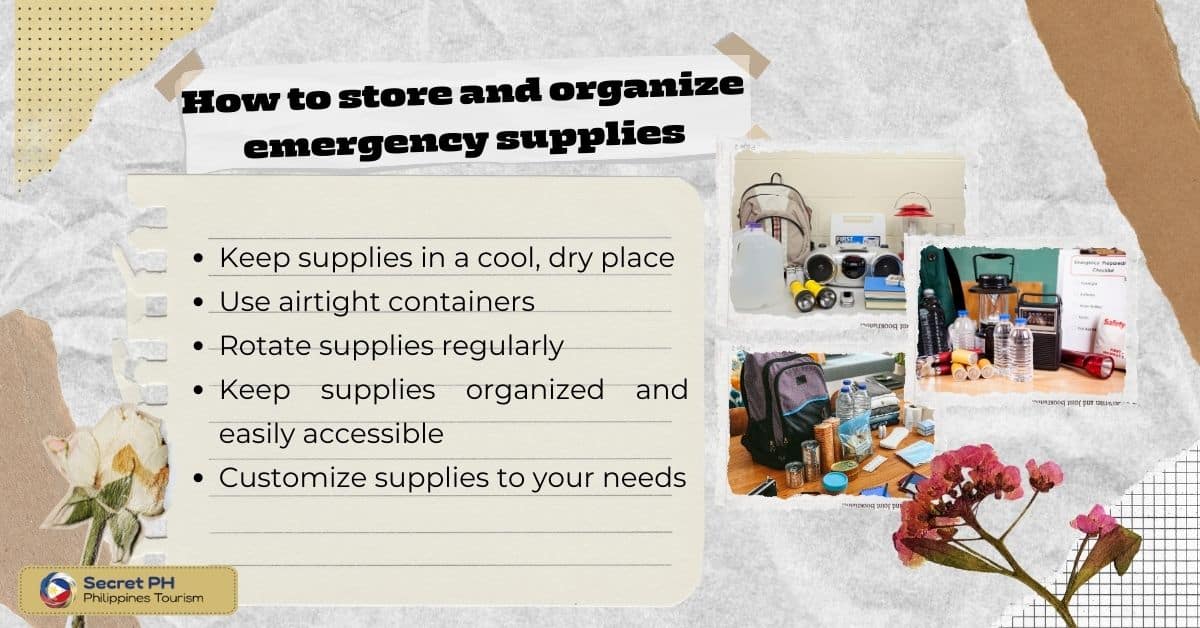
- Keep supplies in a cool, dry place: In the Philippines, high temperatures and humidity can cause certain supplies to deteriorate quickly. Store emergency supplies in a cool, dry place to help prevent damage and extend their shelf life.
- Use airtight containers: Airtight containers can help keep supplies safe from moisture and pests. Consider using plastic storage bins or buckets with tight-fitting lids to store emergency supplies.
- Rotate supplies regularly: Make sure to regularly check and rotate your emergency supplies. This can help ensure that items such as food and medication are not expired and are still effective when you need them.
- Keep supplies organized and easily accessible: When an emergency strikes, you don’t want to waste time searching for supplies. Keep your emergency supplies organized and easily accessible. Consider labeling containers and keeping them in a designated area.
- Customize supplies to your needs: Different emergencies may require different types of supplies. Customize your emergency supplies to meet your specific needs. For example, if you live in a flood-prone area, consider storing supplies in a waterproof container or keeping a boat or inflatable raft handy.
Tip 4: Be Aware of Your Surroundings
Being aware of one’s environment during an emergency is paramount to ensure the wellbeing of oneself and those around them. Situational awareness involves being able to identify potential hazards and optimizing safety by making informed decisions regarding the circumstance.
Identifying threats or symptoms with a sharp awareness allows for quick action to be taken that could ultimately reduce immediate risks. For example, having situational awareness in a heavy rainstorm could lead someone to drive with caution due to potentially slick roads. This kind of mindfulness leads to more calculated behavior even in the midst of chaos and distress associated with emergencies.

How to stay aware of your surroundings
It’s important to stay aware of your surroundings, especially in unfamiliar places or during times of increased risk. Creating good situational awareness habits takes intentional practice and can go a long way when it comes to maintaining personal safety in various scenarios. Being aware of your environment means taking notice of what’s happening around you; not just the people and objects, but also the sounds, smells, and emotions that are present.
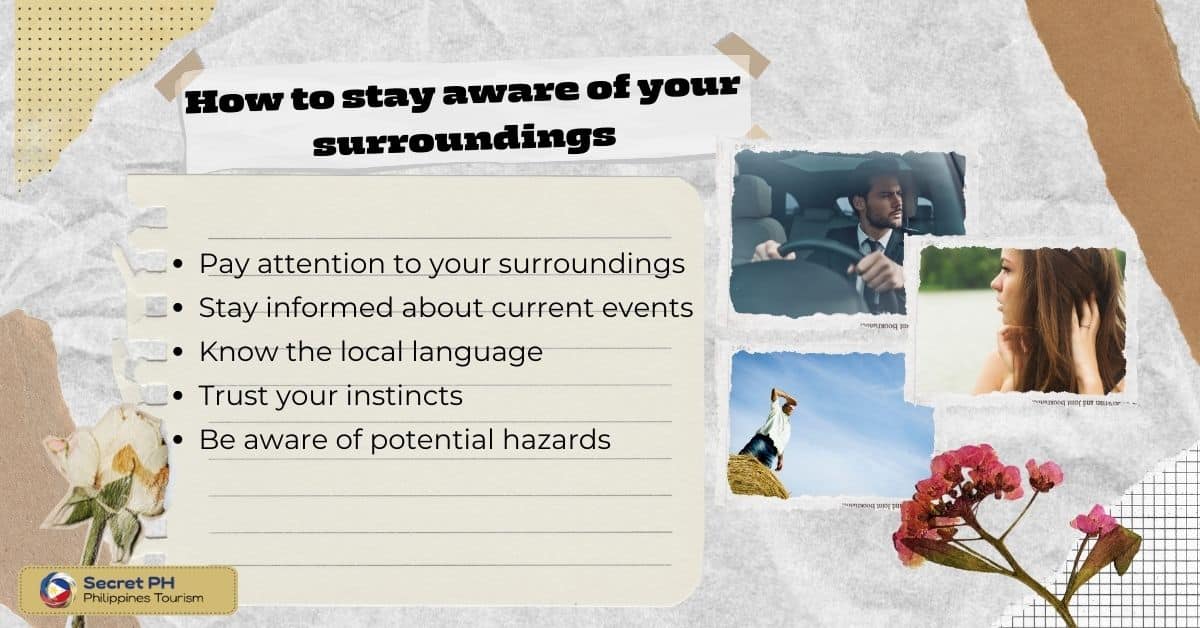
- Pay attention to your surroundings: It’s important to be aware of what’s going on around you. Avoid distractions like your phone or music and be mindful of your environment.
- Stay informed about current events: Stay up-to-date on news and events in your area. This can help you identify potential risks and take necessary precautions.
- Know the local language: Knowing the local language can help you understand what’s happening around you and communicate with others more effectively. It’s also helpful in case of emergencies.
- Trust your instincts: If something feels off, trust your gut. It’s better to err on the side of caution and take steps to protect yourself.
- Be aware of potential hazards: The Philippines is prone to natural disasters such as typhoons, earthquakes, and floods. Be aware of potential hazards in your area and take necessary precautions. It’s also important to be aware of potential safety risks in public spaces, such as pickpocketing or theft.
Tip 5: Know Your Evacuation Routes
Understanding how to safely and quickly evacuate a building is a key component of emergency preparedness. In the event of an emergency, unnecessary delays due to uncertainty can result in safety risks for occupants and responders. Knowing evacuation routes in advance provides people with the knowledge they need to stay safe and exit the building in an orderly manner.
Having this information beforehand also increases efficiency by making it easier for those involved to determine their next steps in the event of an evacuation or other emergency situation. Ultimately, having knowledge of your building’s pre-planned evacuation routes is essential not just for safety, but also for ensuring that an orderly transition occurs so that further risk can be avoided.
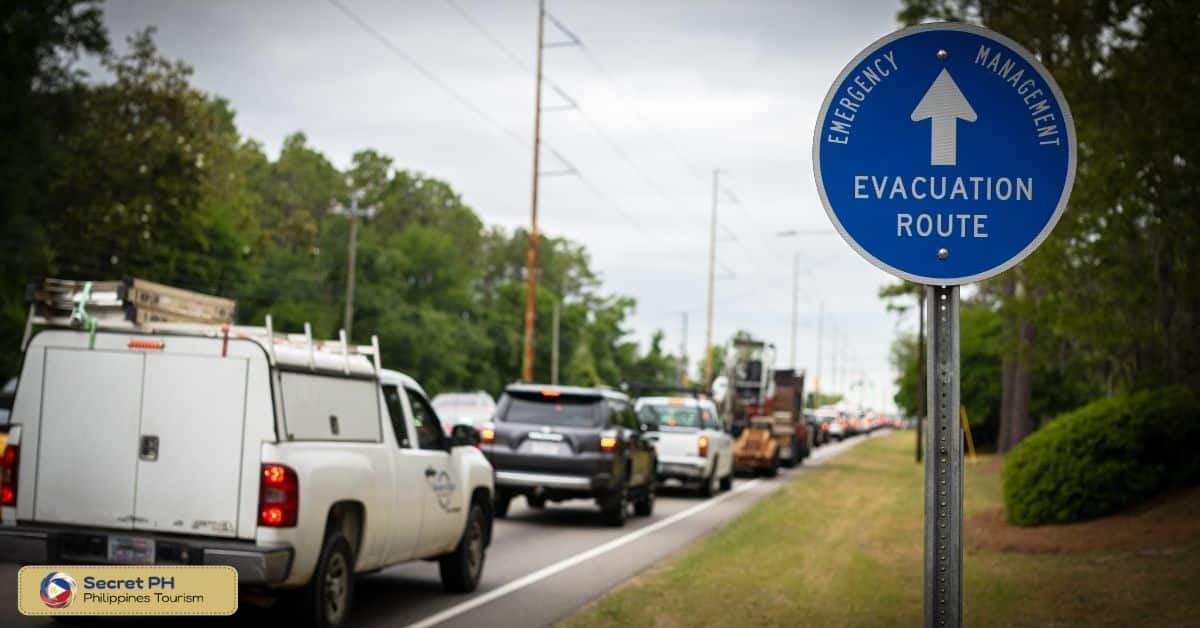
How to locate evacuation routes and plan evacuation
Planning and researching evacuation routes is an important step in ensuring that you, your family, and your home are secure during an emergency situation. With some research ahead of time, you can be sure to know exactly where to go when danger arises. Doing so will put you in a better position potentially save precious time when it comes to safely exiting the area.
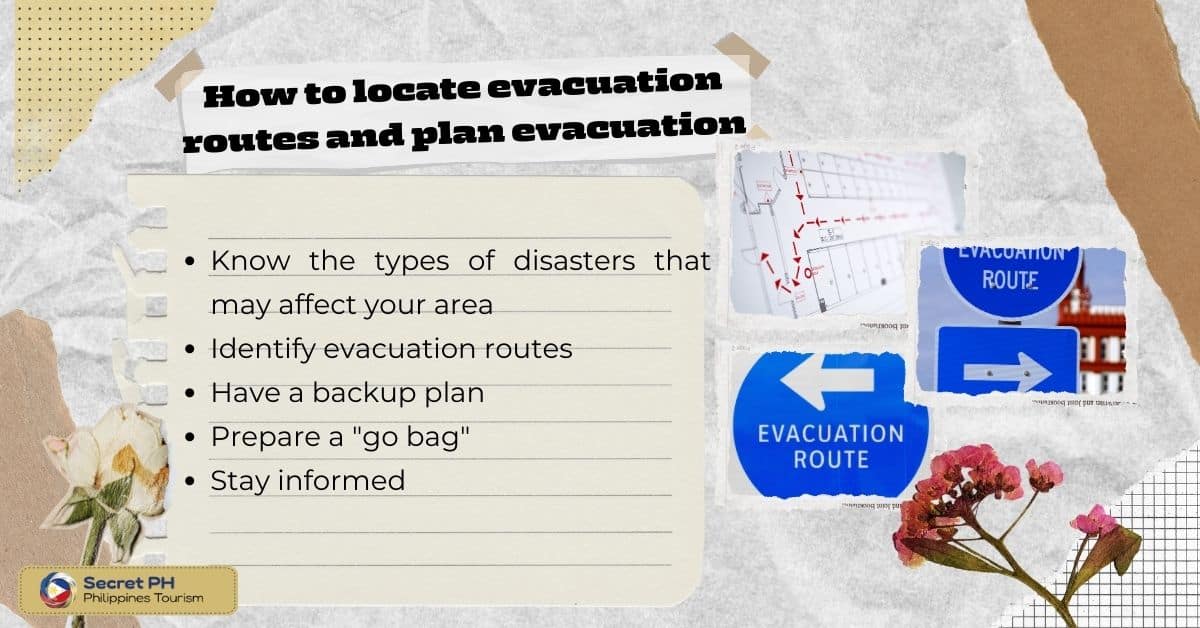
- Know the types of disasters that may affect your area: Different disasters may require different evacuation routes or plans. Knowing the types of disasters that may affect your area can help you plan accordingly.
- Identify evacuation routes: Locate the designated evacuation routes in your area. These may be marked with signs or indicated on maps provided by local authorities.
- Have a backup plan: In case your primary evacuation route is blocked, have a backup plan in place. Identify alternative routes or evacuation sites and be prepared to adapt your plan as needed.
- Prepare a “go bag”: In case of an emergency evacuation, it’s important to have a “go bag” prepared with essential items such as food, water, clothing, and important documents. Keep this bag readily accessible in case you need to evacuate quickly.
- Stay informed: Keep up-to-date with the latest information from local authorities. This can help you make informed decisions and take appropriate actions during an emergency evacuation. Consider signing up for emergency alerts or following social media accounts of local government agencies for real-time updates.
Tip 6: Stay Informed
In emergency situations such as natural disasters, it is vitally important to stay informed and up-to-date on current information. Knowing the conditions around you are key to protecting yourself and your loved ones. Staying informed can include a variety of activities such as following local, state and federal news outlets, checking official websites for emergency announcements, paying attention to weather forecasts, monitoring local radio broadcasts, and signing up for emergency alert systems.
Remaining informed helps to reduce the risk of becoming injured or caught in dangerous scenarios so that you can be well prepared if an emergency arises. Additionally, staying informed can help allay feelings of fear or uncertainty as knowledge often leads to understanding. No matter what the situation may be, arming yourself with reliable information is a critical part of staying safe during an emergency.
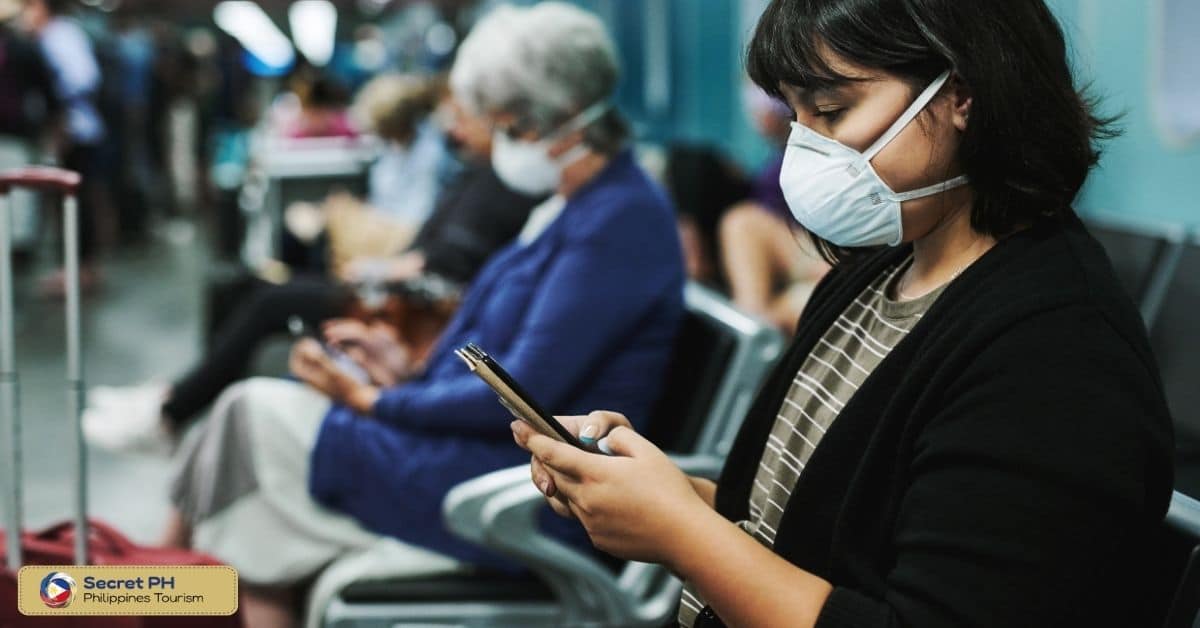
How to stay informed, including using technology and communication
Smartphones, web sites, online publications and streaming news services are among the many tools that can be used to stay updated on current events. Communication also plays an important role in staying informed. Social media networks such as Twitter and Facebook provide a real-time look at what people around the world find interesting or important.
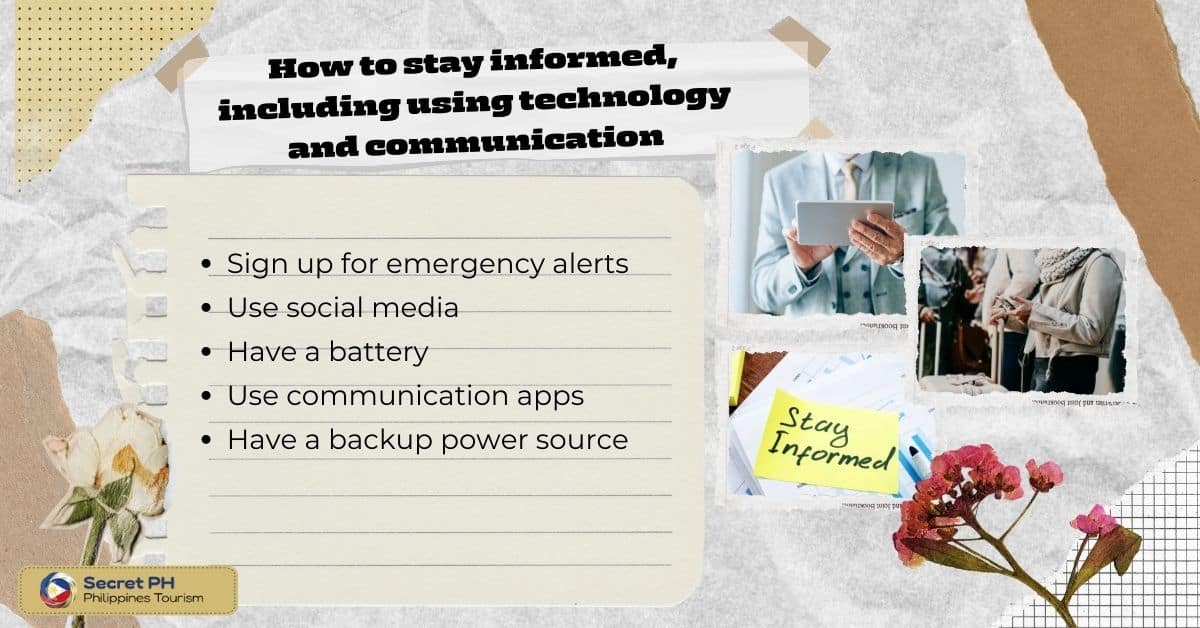
- Sign up for emergency alerts: Many local government agencies in the Philippines offer emergency alert services that provide real-time information about potential hazards or emergencies in your area. These alerts can be received via SMS, email, or through a mobile app.
- Use social media: Social media can be a useful tool for staying informed during an emergency. Follow the social media accounts of local government agencies, news outlets, and other reliable sources for updates and information.
- Have a battery-powered radio: In case of power outages, it’s important to have a battery-powered radio on hand to receive news and updates.
- Use communication apps: Communication apps such as WhatsApp or Viber can be useful for staying in touch with family and friends during an emergency. Consider creating a group chat with your loved ones to share updates and check in on each other.
- Have a backup power source: In case of extended power outages, having a backup power source such as a generator or portable solar panel can help keep you connected and informed. Make sure to keep these devices fully charged and easily accessible.
Tip 7: Practice Communication with Family and Neighbors
Exchange of information quickly and efficiently can help families and neighbors develop effective evacuation and preparedness plans, collaborate on providing assistance to those in need, or access important resources. Knowing that you are connected to locate or help others during a crisis is reassuring when other aspects of the situation feel out of your control.
Through communication, even those living far away can join in relief efforts from their remote locations. Whether by phone, text message, email, social media or direct mail, it’s critical for all members of the community to stay apprised about emergency events in order for organized help and recovery to take place.
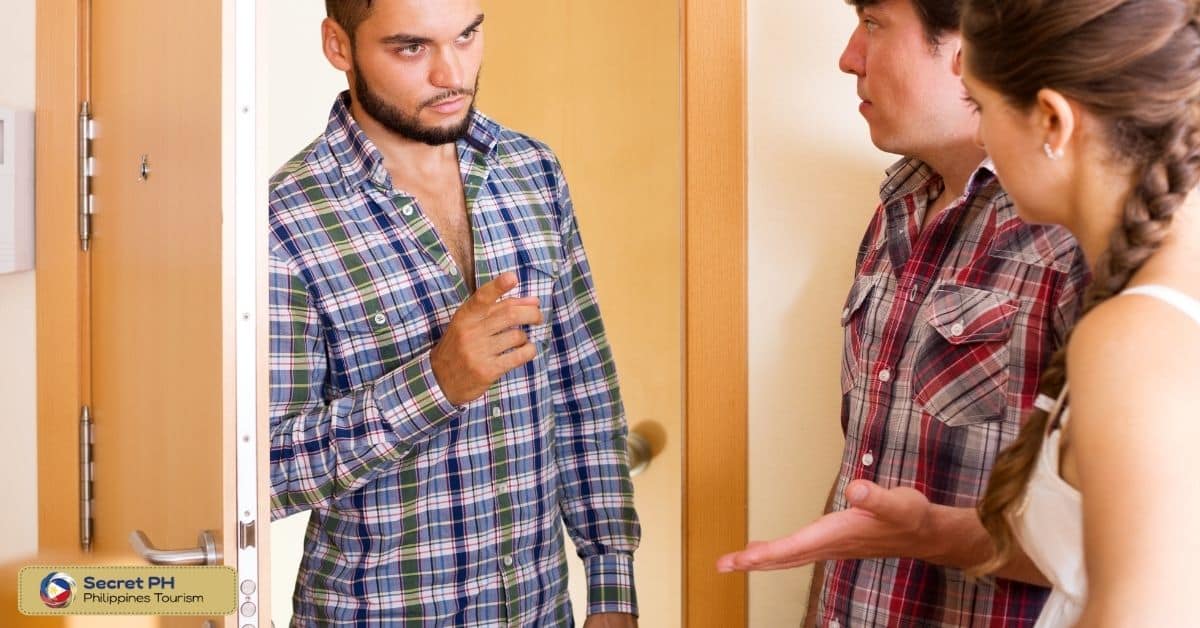
How to practice communication and make plans
Communication is an essential tool for planning and organization; without effective communication, it can become difficult to make plans and execute them successfully. To practice communication, it is important to maintain active listening with both verbal and nonverbal cues. Fostering a sense of empathy will also help everyone to work towards common goals. With these tips in mind, practicing effective communication is achievable and has the potential to improve planning in both personal and professional situations.

- Establish a communication plan: Make a plan with your family or household members for how you will communicate during an emergency. Identify a designated meeting place and establish methods of communication, such as a group chat or a designated phone number to call or text.
- Practice your plan: It’s important to practice your communication plan to ensure that everyone knows what to do in case of an emergency. Conduct drills or mock scenarios to help prepare for real-life situations.
- Use simple language: During an emergency, it’s important to use simple, clear language when communicating with others. Avoid using jargon or technical terms that may be confusing.
- Assign responsibilities: Assign specific responsibilities to each member of your household during an emergency. For example, one person may be responsible for gathering emergency supplies, while another may be responsible for communicating with authorities.
- Stay flexible: It’s important to be flexible and adaptable during an emergency. Plans may need to be adjusted or changed based on the situation, so make sure to remain open to new information and be prepared to make changes as needed.
Tip 8: Secure Your Property
During an emergency, having secure property can ensure that resources and essential goods are kept safe. In a crisis, people may become desperate or confused and make dangerous choices out of fear. Securing buildings, goods, or other items can prevent theft or destruction as well as providing assurance during difficult times.
It is important to have locks on doors and windows if available during an unexpected situation so that critical items remain secured until the emergency passes. Having secure property not only protects goods but also gives peace of mind in trying conditions.
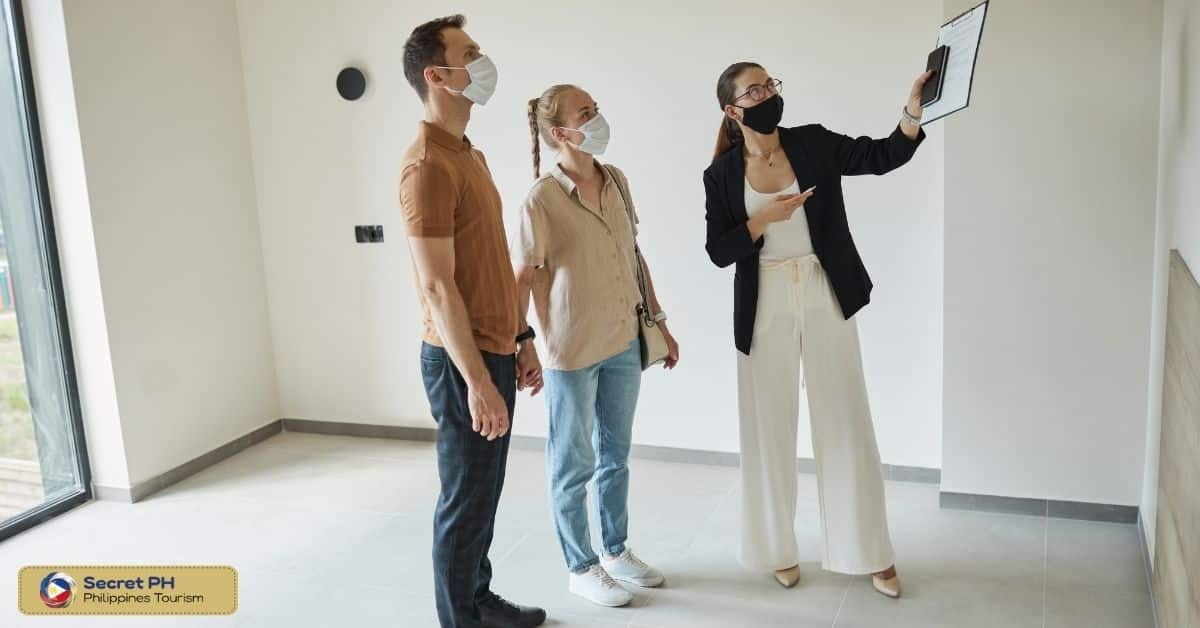
How to secure property and securing valuables
Protecting one’s property in the Philippines during an emergency can be a challenging task, but having the right tools and preparation methods are key. Building owners should be sure to use reinforced building materials whenever possible to protect against extreme weather or natural disasters. Planning ahead is the best way to ensure that property and valuables are guarded even during a disaster situation, so be sure to take the appropriate measures now before you need them most.
- Have a safe or secure storage location: Keep important documents, cash, and valuables in a secure location such as a safe or lockbox. Make sure this location is easily accessible in case of an emergency evacuation.
- Take photos or videos of your property: Before an emergency occurs, take photos or videos of your property and belongings for insurance purposes. This can help you prove the value of any lost or damaged items.
- Secure your home: Install sturdy locks on doors and windows to prevent break-ins or theft. Consider installing a security system or surveillance cameras for added protection.
- Secure outdoor items: If you have outdoor furniture, plants, or other items that could be blown away or damaged during a storm, secure them or bring them indoors.
- Consider temporary storage: If you’re unable to secure your valuables or property at home, consider renting temporary storage at a secure facility. Make sure to choose a facility that’s located in a safe area and has appropriate security measures in place.
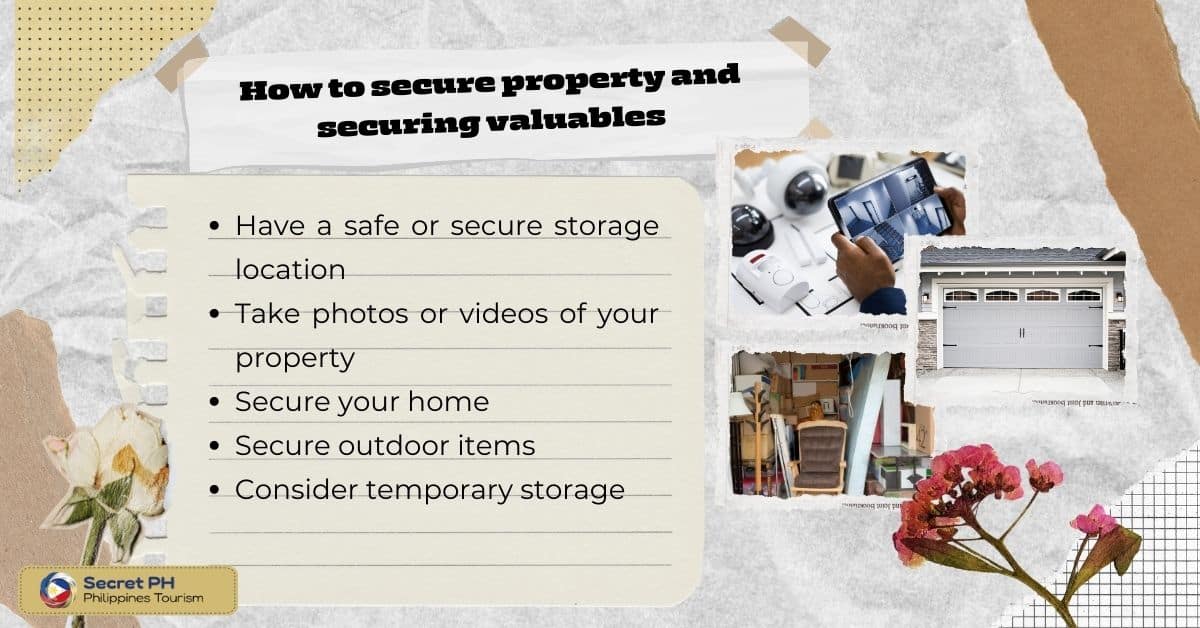
In Conclusion
The eight tips outlined have presented a comprehensive guide to maintaining a safe environment during an emergency in the Philippines. It has been emphasized that natural disasters can occur without warning and it is thus important to be prepared and alert.
By using preventive measures, making physical preparations and creating an emergency response plan, you can help ensure a quick and organized reaction should disasters occur. It is best to remember these guidelines to be better protected during an emergency.


